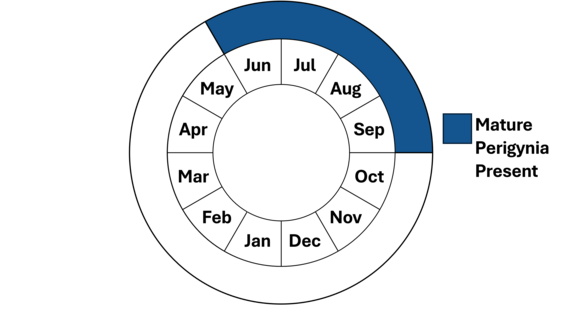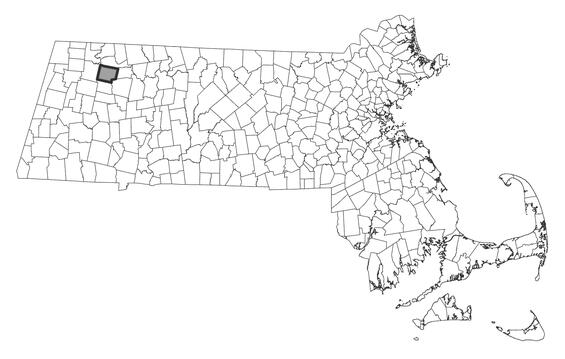- Scientific name: Carex pauciflora
- Species of Greatest Conservation Need (MA State Wildlife Action Plan)
- Endangered (MA Endangered Species Act)
Description
Few-flowered sedge is a perennial member of the sedge family (Cyperaceae) found in sphagnum bogs. It has narrow leaves (1-2 mm; 0.04-0.08 in) and single or loosely clustered flowering stems that are 10-40 cm (4-16 in) tall. Both the common and scientific names of this species refer to its sparse inflorescence. To identify few-flowered sedge and other members of the genus Carex, a technical manual should be consulted.
Few-flowered sedge is among the most easily recognized sedges. Species in this genus have tiny, wind-pollinated flowers that are borne in spikes. Few-flowered sedge is one of relatively few Carex species with just one spike at the top of each stem. The spike consists of a staminate portion above one to six slender, gradually tapering perigynia. The perigynia are 6- 8 mm (0.24-0.31 in) long and 1-1.5 mm (0.04-0.06 in) wide, and are typically spreading or bent downward (deflexed).
The perigynia of other species with single spikes in our area are not slender and tapering, are generally more numerous, and point upward rather than outward or downward. Perhaps the most similar species is Collins’ sedge (C. collinsii), which also has slender, spreading or reflexed, and fairly sparse perigynia. However, Collins’ sedge is a more robust plant, with wider leaves (2 to 4 mm; 0.08-0.16 in) and longer perigynia (8-12 mm; 0.31-0.47 in) that are borne in two to four separate, stalked spikes. Collins’ sedge is not known from Massachusetts and is rare in Connecticut and New York.
Life cycle and behavior

Species in this genus have tiny, wind-pollinated flowers that are borne in spikes.
Population status
Few-flowered sedge is listed under the Massachusetts Endangered Species Act as Endangered. All listed species are protected from killing, collecting, possessing, or sale, and from activities that would destroy habitat and thus directly or indirectly cause mortality or disrupt critical behaviors. Few-flowered sedge is currently known from Franklin County, and it also occurred historically in Berkshire County.
Distribution and abundance
Few-flowered sedge occurs from Alaska and Washington east to Newfoundland and West Virginia. It also occurs in Eurasia. This species is listed as Endangered in Massachusetts and Pennsylvania, Special Concern in Connecticut, and Sensitive in Washington.

Distribution in Massachusetts
1999-2024
Based on records in the Natural Heritage Database
Habitat
Few-flowered sedge occurs in acidic sphagnum bogs, along with characteristic bog plants such as leatherleaf (Chamaedaphne calyculata), bog laurel (Kalmia polifolia), Labrador tea (Rhododendron groenlandicum), and large cranberry (Vaccinium macrocarpon). In New England, populations of few-flowered sedge typically occur on open bog mats where woody vegetation is short and sparse.
Healthy habitats are vital for supporting native wildlife and plants. Explore habitats and learn about conservation and restoration in Massachusetts.
Threats
As for many rare species, the exact management needs of few-flowered sedge are not known. Human or beaver activities that alter hydrological conditions may threaten existing populations. Populations may also be threatened by increased shading or competition from woody species.
Conservation
As for many rare species, the exact management needs of few-flowered sedge are not known. All active management of rare plant populations (including invasive species removal) is subject to review under the Massachusetts Endangered Species Act and should be planned in close consultation with the MassWildlife’s Natural Heritage & Endangered Species Program.
Contact
| Date published: | April 9, 2025 |
|---|